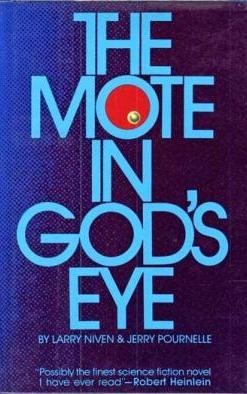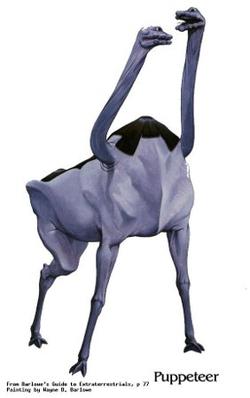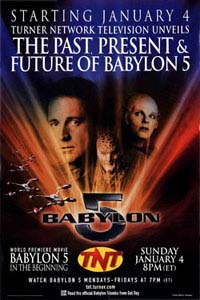
Jerry Eugene Pournelle was an American scientist in the area of operations research and human factors research, a science fiction writer, essayist, journalist, and one of the first bloggers. In the 1960s and early 1970s, he worked in the aerospace industry, but eventually focused on his writing career. In an obituary in Gizmodo, he was described as "a tireless ambassador for the future."
Known Space is the fictional setting of about a dozen science fiction novels and several collections of short stories by American writer Larry Niven. It has also become a shared universe in the spin-off Man-Kzin Wars anthologies. The Internet Speculative Fiction Database (ISFDB) catalogs all works set in the fictional universe that includes Known Space under the series name Tales of Known Space, which was the title of a 1975 collection of Niven's short stories. The first-published work in the series, which was Niven's first published piece, was "The Coldest Place", in the December 1964 issue of If magazine, edited by Frederik Pohl. This was the first-published work in the 1975 collection.
A sleeper ship is a hypothetical type of crewed spacecraft, or starship in which most or all of the crew spend the journey in some form of hibernation or suspended animation. The only known technology that allows long-term suspended animation of humans is the freezing of early-stage human embryos through embryo cryopreservation, which is behind the concept of embryo space colonization.

Asteroid impact avoidance encompasses the methods by which near-Earth objects (NEO) on a potential collision course with Earth could be diverted away, preventing destructive impact events. An impact by a sufficiently large asteroid or other NEOs would cause, depending on its impact location, massive tsunamis or multiple firestorms, and an impact winter caused by the sunlight-blocking effect of large quantities of pulverized rock dust and other debris placed into the stratosphere. A collision 66 million years ago between the Earth and an object approximately 10 kilometers wide is thought to have produced the Chicxulub crater and triggered the Cretaceous–Paleogene extinction event that is understood by the scientific community to have caused the extinction of all non-avian dinosaurs.

The Mote in God's Eye is a science fiction novel by American writers Larry Niven and Jerry Pournelle, first published in 1974. The story is set in the distant future of Pournelle's CoDominium universe, and charts the first contact between humanity and an alien species. The title of the novel is a reference to the Biblical "The Mote and the Beam" parable and is the nickname of a star. The Mote in God's Eye was nominated for the Hugo, Nebula and Locus Awards in 1975.

The Gripping Hand is a science fiction novel by American writers Larry Niven and Jerry Pournelle, published in 1993. A sequel to their 1974 work The Mote in God's Eye, The Gripping Hand is, chronologically, the last novel to be set in the CoDominium universe. In the United Kingdom, it was released as The Moat around Murcheson's Eye.

Pierson's Puppeteers, often known just as Puppeteers, are a fictional alien race from American author Larry Niven's Known Space books. The race first appeared in Niven’s novella Neutron Star.
The concept of self-replicating spacecraft, as envisioned by mathematician John von Neumann, has been described by futurists and has been discussed across a wide breadth of hard science fiction novels and stories. Self-replicating probes are sometimes referred to as von Neumann probes. Self-replicating spacecraft would in some ways either mimic or echo the features of living organisms or viruses.

Lucifer's Hammer is a science fiction post-apocalypse-survival novel by American writers Larry Niven and Jerry Pournelle that was first published in 1977. It was nominated for the Hugo Award for Best Novel in 1978. Two issues of a planned six-part comic book adaptation were published by Innovation Comics in 1993.
A stasis or stasis field, in science fiction, is a confined area of space in which time has been stopped or the contents have been rendered motionless.

Babylon 5: In the Beginning is a 1998 American made-for-television film set in the Babylon 5 fictional universe. It was written by J. Michael Straczynski and directed by Michael Vejar. The film originally aired on January 4, 1998 on the TNT cable network, a couple of weeks before the fifth season of the series began.

Inconstant Moon is a science fiction short story collection by American author Larry Niven that was published in 1973. "Inconstant Moon" is also a 1971 short story that is included in the collection. The title refers to "O, swear not by the moon, th' inconstant moon", a quote from the balcony scene in William Shakespeare's Romeo and Juliet. The collection was assembled from the US collections The Shape of Space and All the Myriad Ways.

The Hammer of God is a science fiction novel by Arthur C. Clarke originally published in 1993. Set in the year 2109, it deals with the discovery of an asteroid to be on course to collide with Earth and depicts the mission for deflecting the asteroid by using fusion thermal rockets.
A kinetic bombardment or a kinetic orbital strike is the hypothetical act of attacking a planetary surface with an inert kinetic projectile from orbit, where the destructive power comes from the kinetic energy of the projectile impacting at very high speeds. The concept originated during the Cold War.

Asteroids have appeared in fiction since at least the late 1800s, the first one—Ceres—having been discovered in 1801. They were initially only used infrequently as writers preferred the planets as settings. The once-popular Phaëton hypothesis, which states that the asteroid belt consists of the remnants of the former fifth planet that existed in an orbit between Mars and Jupiter before somehow being destroyed, has been a recurring theme with various explanations for the planet's destruction proposed. This hypothetical former planet is in science fiction often called "Bodia" in reference to Johann Elert Bode, for whom the since-discredited Titius–Bode law that predicts the planet's existence is named.

Eon is a science fiction novel by American author Greg Bear published by Bluejay Books in 1985. Eon was nominated for an Arthur C. Clarke Award in 1987. It is the first novel in The Way series; followed by Eternity.

Exiles to Glory is a science fiction novella by American writer Jerry Pournelle, published in 1978. It is a sequel to the stories in the collection High Justice. As with those stories, it weaves the story of pioneering individuals in space with considerations of the technical and financial challenges facing them. It was republished in an omnibus edition with High Justice in 2009 as Exile—and Glory.
Ivan's Hammer is the idea to use a natural asteroid or meteoroid as a weapon of mass destruction in a first-strike role. The concept can be traced back to the 1960s. At the annual meeting of the American Astronautical Society, in January, 1962 Dandridge M. Cole warned that as early as 1970 the Soviets could develop the technology to divert a near earth asteroid to impact a target on earth.
A list of works by, or about, the American science fiction author Larry Niven.












